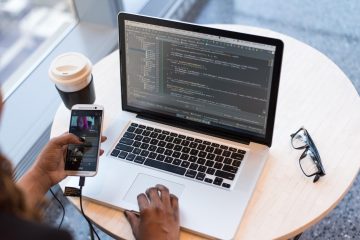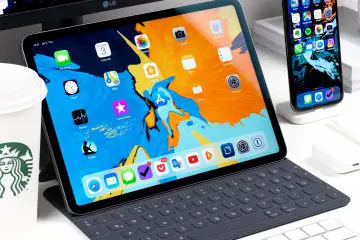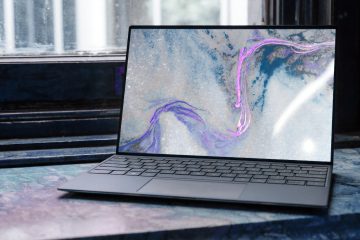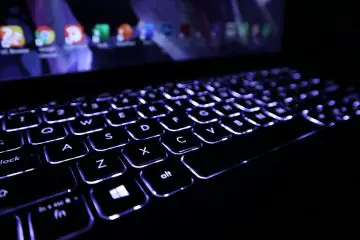In the ever-evolving landscape of technology, computers have become indispensable tools in our daily lives. From personal computing to professional applications, these machines offer us a gateway to endless possibilities. As we interact with these systems, a crucial element lies in the way we input information and receive outputs. This is where the diverse range of input and output devices for computers come into play, shaping our digital experiences in remarkable ways.
Whether we are typing an email, designing artwork, playing immersive games, or conducting scientific research, our interactions with computers are mediated by a wide array of devices. Each device serves a specific purpose, enabling us to communicate with our digital counterparts effectively. These devices bridge the gap between the physical world and the virtual realm, empowering us to translate our intentions into tangible actions.
On the input side, we find devices that allow us to provide instructions, commands, and data to the computer. Keyboards enable us to type and communicate through text, while pointing devices like mice and touchpads grant us precise control over on-screen cursors. Touchscreens revolutionize the way we interact with smartphones and tablets, offering an intuitive and direct manipulation of digital content. From microphones capturing our voice to scanners digitizing physical documents, input devices cater to our diverse needs, ensuring seamless communication with the digital realm.
Equally vital are the output devices, which bring the digital world to life by presenting us with tangible feedback and results. Displays, be it traditional monitors or modern high-resolution screens, offer us visual representations of information, graphics, and multimedia. Speakers and headphones deliver immersive audio experiences, enriching our enjoyment of music, movies, and virtual environments. Printers transform digital documents into physical copies, enabling us to share information in tangible forms. And who can forget the haptic feedback of our smartphones, vibrating in response to notifications and touches, making our digital interactions more sensory and engaging?
To fully appreciate the breadth and significance of input and output devices for computers, we embark on a comprehensive exploration. In this article, we will delve into a diverse range of devices, exploring their functions, applications, and the impact they have on our daily interactions with technology. From the conventional to the cutting-edge, we will uncover the magic behind these devices and unveil the seamless synergy between humans and computers.
So, join us on this journey as we unravel the fascinating world of input and output devices, shedding light on the mechanisms that empower us to bridge the gap between the physical and digital realms. Together, we will gain a deeper understanding of these devices, appreciating their importance in shaping our experiences and driving innovation in the realm of human-computer interaction.
List of Input and Output devices of Computers
| Input Device | Description |
|---|---|
| Keyboard | A standard input device used to enter text and commands into a computer. It consists of a set of keys, including letters, numbers, and special characters. |
| Mouse | A pointing device that allows the user to move a cursor on the screen and interact with graphical user interfaces. It typically consists of buttons and a scroll wheel for additional functionality. |
| Touchpad | A built-in input device commonly found on laptops, allowing users to control the cursor by moving their fingers across a touch-sensitive surface. |
| Trackball | An input device similar to a mouse but with a stationary ball on top. Users can move the cursor by rolling the ball with their fingers or palm. |
| Joystick | A handheld device used for controlling movement in video games or simulations. It usually consists of a stick that can be tilted or rotated, along with buttons for additional functions. |
| Gamepad | A controller designed specifically for gaming, featuring buttons, directional pads, and analog sticks. It connects to the computer or gaming console and provides input for various gaming actions. |
| Graphics Tablet | A flat, pressure-sensitive tablet used for digital drawing or graphic design. Artists can use a stylus or pen on the tablet’s surface to create precise drawings or annotations, which are then translated into digital form on the computer screen. |
| Touchscreen | A display that responds to touch input, allowing users to interact directly with the screen by tapping, swiping, or pinching. It eliminates the need for a separate pointing device, making it common in smartphones, tablets, and some computers. |
| Barcode Reader | A device that reads barcodes, typically found on product labels or packaging. It uses a laser or camera to capture and decode the barcode information, which can be used for inventory management, pricing, or identification purposes. |
| QR Code Reader | Similar to a barcode reader, but specialized for scanning QR (Quick Response) codes. QR codes can store more information and are commonly used for applications such as mobile payments, ticketing, or accessing web content by scanning codes with a smartphone or dedicated QR code reader. |
| Biometric Scanner | A device that analyzes unique physical characteristics or behavioral traits to authenticate a person’s identity. Examples include fingerprint scanners, iris scanners, and facial recognition systems. Biometric scanners are used for security purposes, such as unlocking devices or granting access to restricted areas. |
| Webcam | A small camera typically built into or attached to a computer, used to capture video or images. Webcams are commonly used for video conferencing, live streaming, or taking pictures or videos for various applications. |
| Microphone | An audio input device used to record sound or input voice commands. It converts sound waves into electrical signals that can be processed by the computer. Microphones are commonly used for voice communication, voice recording, or speech recognition. |
| MIDI Controller | A musical instrument or device used to control MIDI (Musical Instrument Digital Interface) synthesizers, sound modules, or software. It typically features piano-like keys, buttons, sliders, or knobs, allowing musicians to create and manipulate digital music. |
| Scanner | A device that converts physical documents, photos, or images into digital format. Scanners capture the content of the source material and create digital files that can be stored, edited, or shared electronically. |
| Optical Character Recognition (OCR) Scanner | A specialized scanner that can recognize and convert printed or handwritten text into editable digital text. OCR scanners are commonly used for document digitization, text extraction, or converting physical documents into searchable formats. |
| Light Pen | A pen-shaped device that can detect and interact with the computer screen by touching or pointing at specific areas. Light pens were more prevalent in early computer systems and were used for tasks such as drawing, selecting options, or interacting with graphical interfaces. |
| Game Controller | Similar to a gamepad, but with a specific design for different gaming consoles or platforms. Game controllers provide input for gaming actions, including buttons, directional pads, analog sticks, or motion sensors, depending on the device. |
| Stylus | A pen-like tool used with touchscreens, graphics tablets, or other devices that support stylus input. It allows for more precise control and is commonly used for drawing, note-taking, or navigating touchscreen interfaces. |
| Remote Control | A handheld device used to wirelessly control electronic devices such as televisions, media players, or presentation systems. Remote controls use infrared or radio signals to send commands to the targeted device, enabling users to navigate menus, adjust settings, or play media. |
| Gesture Recognition | A technology that interprets and responds to human gestures or body movements. Cameras or sensors capture the user’s movements, which are then translated into commands or interactions with the computer. Gesture recognition is used in applications such as gaming, virtual reality, or controlling presentations without physical contact. |
| Foot Pedal | A pedal operated by foot pressure, typically used in transcription or multimedia applications. Foot pedals can be customized to perform various functions, such as controlling audio playback, scrolling through documents, or triggering specific commands. |
| RFID Reader | A device that reads radio frequency identification (RFID) tags or cards. RFID readers use radio waves to communicate with and capture information from RFID tags, which can store data such as product details, access credentials, or inventory tracking information. |
| Light Sensor | A device that detects ambient light levels and can adjust screen brightness accordingly. Light sensors are commonly found in smartphones, tablets, or laptops to optimize visibility and conserve battery life. |
| Motion Sensor | A device that detects physical movement or changes in the environment. Motion sensors are used for security systems, gaming consoles, or automatic lighting control, among other applications. They can detect gestures, presence, or specific motion patterns. |
| GPS Receiver | A device that receives signals from GPS (Global Positioning System) satellites to determine the user’s geographic location and provide navigation or mapping information. GPS receivers are commonly used in car navigation systems, smartphones, or outdoor tracking devices. |
| Accelerometer | A sensor that measures acceleration forces, allowing the detection of changes in velocity or orientation. Accelerometers are commonly found in smartphones, tablets, game controllers, and wearable devices. They enable features such as screen rotation, motion-based gaming, or fitness tracking. |
| Gyroscope | Similar to an accelerometer, a gyroscope measures angular velocity or rotation. Gyroscopes are used in conjunction with accelerometers to provide more accurate motion sensing, particularly for gaming, virtual reality, or augmented reality applications. |
| Infrared Receiver | A device that receives infrared signals from a remote control or other infrared transmitters. Infrared receivers decode the signals and allow the computer to interpret commands or perform specific actions based on the received infrared codes. |
| Biometric Keyboard | A specialized keyboard that incorporates biometric authentication features, such as fingerprint scanning or palm recognition. Biometric keyboards enhance security by ensuring that only authorized individuals can access the computer or sensitive information. |
| Game Glove | A glove-like input device that tracks hand movements or gestures for gaming purposes. Game gloves often include sensors or motion trackers to capture finger, hand, or wrist movements, providing a more immersive and intuitive gaming experience. |
| 3D Mouse | A specialized mouse designed for 3D modeling, CAD (Computer-Aided Design), or other applications that require precise 3D navigation. 3D mice often feature an additional input device, such as a controller or joystick, to manipulate objects in three-dimensional space. |
| Voice Recorder | A portable device used to record audio. Voice recorders are commonly used for capturing interviews, lectures, or personal memos, with the recorded audio later transferred to a computer for playback or transcription. |
| E-pen | A digital pen that captures handwriting or drawings on special surfaces or digital paper. E-pens use various technologies, such as ultrasonic or electromagnetic, to track pen movements and store them as digital files. They are commonly used for digital note-taking or creating digital artwork. |
| Eye Tracker | A device that monitors and tracks eye movements to determine the user’s point of gaze. Eye trackers can be used for research, assistive technologies, or interaction with computer interfaces by allowing users to control the cursor or select options with their eyes. |
| MIDI Keyboard | A musical keyboard controller that uses the MIDI protocol to trigger and control sound modules, synthesizers, or software. MIDI keyboards typically feature piano-like keys and various controls for playing and manipulating digital music. |
| Breath Controller | A device that detects and converts breath pressure or airflow into digital signals. Breath controllers are used in music production, particularly for wind instruments simulation, allowing musicians to control aspects such as volume, expression, or pitch using their breath. |
| Headset | A combination of headphones and a microphone, typically used for communication purposes, such as voice or video calls, gaming, or multimedia playback. Headsets provide both audio output and input in a single device, allowing for hands-free communication and immersive audio experiences. |
| Smart Card Reader | A device that reads smart cards, which are credit card-sized cards embedded with integrated circuits. Smart card readers allow for secure access to information, such as identification, authentication, or financial transactions. |
| MIDI Drum Pad | A percussion pad or grid controller used for playing and triggering digital drum sounds or other MIDI-enabled samples. MIDI drum pads are commonly used in music production or live performances, providing a tactile and expressive way to create drum patterns or beats. |
| Biometric Mouse | A mouse that integrates biometric authentication capabilities, such as fingerprint scanning or palm recognition. Biometric mice enhance security by ensuring that only authorized users can access the computer or sensitive data. |
| Braille Display | A tactile output device that converts digital text or information into braille characters. Braille displays allow blind or visually impaired users to read digital content by feeling the raised dots representing braille letters on the display surface. |
| Air Mouse | A wireless mouse that detects and interprets hand movements or gestures in the air. Air mice eliminate the need for a physical surface, making them suitable for presentations, media centers, or gaming consoles that support motion-based input. |
| MIDI Wind Controller | A wind instrument-like controller that allows musicians to play and control digital instruments or synthesizers using breath pressure, lip movements, and fingering. MIDI wind controllers offer a familiar interface for wind instrument players in a digital music production context. |
| Interactive Whiteboard | A large touch-sensitive display or projection surface that allows users to interact with digital content using gestures, touch, or specialized pens. Interactive whiteboards are often used in classrooms, meetings, or collaborative environments to enhance presentations or group work. |
| MIDI Fader Controller | A control surface with sliders or faders designed to manipulate and control digital audio levels, effects, or parameters. MIDI fader controllers provide tactile control for precise adjustments in audio production or DJing, offering a hands-on approach to mixing and editing. |
| Haptic Gloves | Gloves or hand-worn devices that provide tactile feedback or sensations through vibrations, pressure, or force. Haptic gloves are used in virtual reality, simulations, or teleoperation systems to enhance the sense of touch and create more immersive experiences. |
| OMR (Optical Mark Recognition) Scanner | A scanner that reads and interprets predefined marks or patterns on paper, typically used for capturing responses in multiple-choice exams, surveys, or ballot sheets. OMR scanners can automatically detect and tally marked answers or selections. |
| Magnetic Stripe Reader | A device that reads data from magnetic stripe cards, commonly used in credit cards, identification cards, or access control cards. Magnetic stripe readers use a magnetic head to decode the information stored in the card’s magnetic stripe, enabling transactions or verification processes. |
| MIDI Foot Controller | A foot-operated controller used to trigger MIDI commands or control parameters in music production or live performances. MIDI foot controllers typically feature pedals, buttons, or switches, allowing musicians to control various aspects of their music without using their hands. |
| MIDI Breath Controller | A specialized MIDI controller that converts breath pressure or airflow into MIDI data, allowing musicians to use their breath to control various aspects of digital music, such as volume, modulation, or expression. MIDI breath controllers are often used in wind instrument simulation or performance. |
| E-Reader | A portable electronic device designed for reading digital books, magazines, or documents. E-readers use electronic ink displays that mimic the appearance of printed text and offer features like adjustable font sizes, bookmarking, or annotations. |
| Foot Mouse | A foot-operated pointing device that replaces or supplements traditional mice for individuals with limited hand or arm mobility. Foot mice typically consist of a movable platform or sensors that can be operated using foot movements, enabling cursor control without hand use. |
| Drum Pad Controller | A compact device featuring drum pads or trigger pads that musicians can use to play and trigger digital drum sounds, samples, or MIDI notes. Drum pad controllers are commonly used in music production or live performances, providing a tactile and expressive way to create drum patterns. |
| MIDI Guitar | A guitar or guitar-like controller that uses MIDI technology to produce and control a wide range of digital sounds, synthesizers, or software instruments. MIDI guitars allow guitarists to explore different timbres, play virtual instruments, or create unique sounds using familiar playing techniques. |
| Virtual Reality (VR) Controller | A handheld input device specifically designed for virtual reality experiences. VR controllers often feature buttons, triggers, joysticks, or motion sensors to track hand movements and enable interactions in virtual environments, providing a more immersive and realistic user experience. |
| MIDI Pad Controller | A compact controller featuring a grid of buttons or pads used for playing melodies, triggering samples, or controlling software parameters. MIDI pad controllers offer a versatile and tactile interface for music production, allowing users to create loops, beats, or sequences using the pads. |
| Document Camera | A camera mounted on an adjustable arm or stand, used to capture images or videos of documents, books, or three-dimensional objects in real-time. Document cameras are commonly used in classrooms, presentations, or video conferencing to share physical content with remote participants. |
| MIDI Keytar | A portable keyboard instrument designed to be played like a guitar, with a shoulder strap allowing for mobility and expressive performance. MIDI keytars combine the functionality of a MIDI controller keyboard with the stage presence and playing style of a guitar. |
| Eye-Tracking Headset | A headset equipped with integrated eye-tracking technology to monitor and record the movement of the user’s eyes. Eye-tracking headsets are used in research, UX design, or gaming applications, enabling gaze-based interactions, attention analysis, or immersive visual experiences. |
| MIDI Control Surface | A hardware device designed for hands-on control of digital audio workstations (DAWs), software synthesizers, or effects. MIDI control surfaces typically feature faders, knobs, buttons, or touch-sensitive pads, providing tactile control over various parameters in music production or live performances. |
| Multi-Touch Display | A display that supports multiple touch points simultaneously, allowing for gestures like pinch-to-zoom, two-finger scrolling, or rotation. Multi-touch displays are commonly found in smartphones, tablets, interactive kiosks, or tabletop surfaces, enhancing user interactions and intuitive input. |
| Smart Pen | A digital pen that captures both writing on physical paper and digital annotations simultaneously. Smart pens often use special paper or digital writing surfaces to track pen movements and synchronize them with digital files, making it easy to digitize handwritten notes or sketches. |
| MIDI Mixer | A hardware device designed to control and mix audio signals or MIDI data in music production or live performances. MIDI mixers typically feature faders, knobs, or buttons, allowing users to adjust volume levels, pan positions, or effects parameters for individual tracks or channels. |
| Speech Recognition System | A technology that converts spoken words into text or performs specific actions based on voice commands. Speech recognition systems use algorithms and language models to interpret and transcribe spoken words, enabling hands-free control, dictation, or voice-based interfaces. |
| MIDI Pedalboard | A foot-operated MIDI controller designed to emulate a traditional organ pedalboard. MIDI pedalboards provide a way to play and control digital organ sounds or other MIDI-compatible instruments using foot movements, simulating the playing experience of a traditional pipe organ. |
| 3D Scanner | A device that captures the three-dimensional shape and texture of physical objects or environments and creates digital 3D models. 3D scanners use various technologies, such as laser scanning or structured light, to collect data and create highly detailed representations of real-world objects. |
| Handheld Scanner | A portable scanning device that allows users to scan documents, images, or barcodes without the need for a flatbed scanner. Handheld scanners are moved over the surface of the object to capture the data, making them convenient for capturing content in non-standard or large formats. |
| MIDI Ribbon Controller | A touch-sensitive strip or ribbon-shaped controller used to manipulate sound parameters, modulation, or pitch. MIDI ribbon controllers provide continuous control over specific parameters by sliding a finger or object along the surface, offering expressive possibilities in music performance or sound design. |
| MIDI Step Sequencer | A specialized MIDI controller used for creating and sequencing musical patterns or loops. MIDI step sequencers feature a grid of buttons or pads, where each step represents a specific note or event. Musicians can program patterns by activating or deactivating steps, allowing for rhythmic and melodic composition. |
| Biometric Door Lock | A security device that uses biometric authentication, such as fingerprint scanning or facial recognition, to unlock and grant access to doors or entry points. Biometric door locks provide a higher level of security and convenience compared to traditional key or code-based locks. |
| MIDI Sustain Pedal | A foot-operated pedal used to sustain or extend the duration of MIDI notes or chords in electronic keyboards or synthesizers. MIDI sustain pedals emulate the functionality of the sustain pedal in acoustic pianos, allowing musicians to add expression and dynamics to their performances. |
| NFC Reader | A device that reads Near Field Communication (NFC) tags or cards. NFC readers use radio frequency communication to exchange data with NFC-enabled devices or tags, enabling applications such as contactless payments, access control, or data transfer between devices in close proximity. |
| MIDI Arpeggiator | A device or software module that automatically generates arpeggios or sequences based on MIDI input. MIDI arpeggiators interpret the notes played on a MIDI controller and create patterns or sequences with various rhythmic or melodic variations, enhancing the creativity and complexity of musical compositions. |
| GPS Tracker | A device that uses GPS technology to track and monitor the location of objects or individuals. GPS trackers provide real-time or historical location data, making them useful for personal tracking, vehicle tracking, asset management, or geolocation-based applications. |
| MIDI Expression Pedal | A pedal or controller used to control parameters such as volume, modulation, or effect levels in MIDI-enabled devices or software. MIDI expression pedals typically offer variable control based on foot movement, allowing musicians to add nuances and dynamics to their performances. |
| Smart Home Hub | A central device that serves as a control center for various smart home devices and systems. Smart home hubs enable users to manage and automate connected devices, such as lights, thermostats, security systems, or entertainment systems, using voice commands or mobile apps. |
| MIDI Breathalyzer | A specialized MIDI controller that converts breath pressure or airflow into MIDI data, allowing musicians to use their breath as a performance parameter. MIDI breathalyzers provide a unique way to control expressive elements in music, such as dynamics, filtering, or effects. |
| Biometric Time Clock | A timekeeping system that uses biometric authentication, such as fingerprint scanning or facial recognition, to track and record employee attendance or working hours. Biometric time clocks offer accurate and secure methods for time and attendance management in various industries. |
| MIDI Harmonica | A MIDI controller designed to resemble a harmonica, allowing musicians to play and control digital sounds or synthesizers using breath pressure and lip movements. MIDI harmonicas provide a familiar interface for harmonica players in a digital music production context. |
| Wireless Presenter | A handheld device used for delivering presentations or controlling slideshows. Wireless presenters typically feature buttons or touch-sensitive surfaces that allow users to navigate through slides, highlight points, or control audio/video playback during presentations. |
| MIDI Wind Synthesizer | A digital instrument that emulates wind instruments’ sounds and playing techniques, controlled via MIDI. MIDI wind synthesizers often feature built-in breath sensors and key-like controls, allowing musicians to perform and express themselves in a similar manner to playing traditional wind instruments. |
| Smart Glasses | Wearable glasses that incorporate a small display, typically in front of the user’s eyes, and offer various digital functionalities. Smart glasses can provide augmented reality (AR) overlays, display notifications, or offer hands-free access to information, navigation, or communication. |
| MIDI Guitar Controller | A specialized MIDI controller designed to resemble a guitar, allowing musicians to play and control digital sounds or synthesizers using guitar-like playing techniques. MIDI guitar controllers offer guitarists a familiar interface in a digital music production or live performance context. |
| MIDI Harp Controller | A MIDI controller designed to resemble a harp, allowing musicians to play and control digital sounds or synthesizers using harp-like techniques. MIDI harp controllers offer a unique interface for creating harp-like melodies or exploring new possibilities in music production and composition. |
| Smart Ring | A wearable device in the form of a ring that integrates various digital features and functionalities. Smart rings can provide notifications, activity tracking, contactless payments, or act as control devices for smart home systems or smartphones, offering convenience and discreet interactions. |
| MIDI Wind Instrument | A digital wind instrument that uses MIDI technology to generate and control a wide range of digital sounds, including emulations of traditional wind instruments or unique synthesized sounds. MIDI wind instruments allow for expressive performances and offer versatility in music creation and live performances. |








